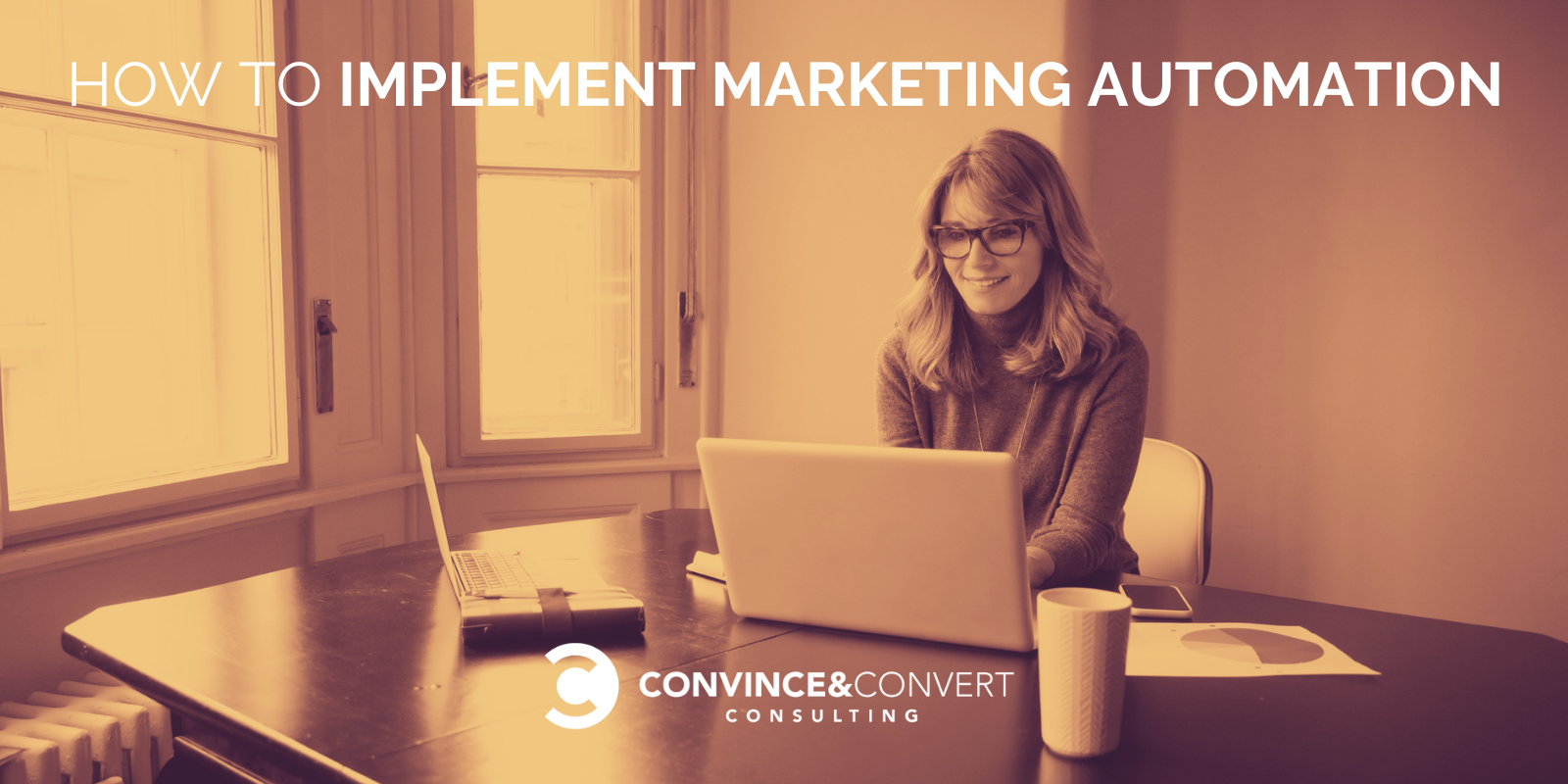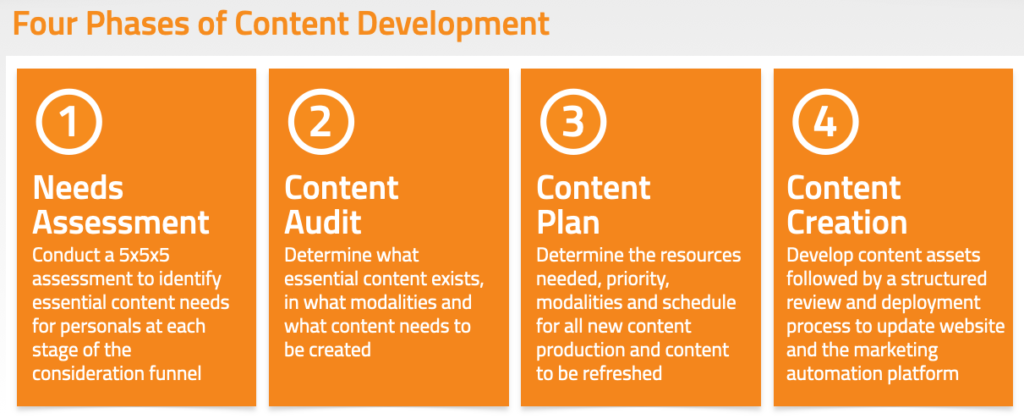
This is the final installment of our three-part series delving into the process for selection and preparation for CRM + marketing automation implementation.
Part 1 of 3: How to Choose a Marketing Automation Platform
Part 2 of 3: How to Collect the Right Data to Boost Your Marketing
Finally, the implementation journey is about to begin. But you are not ready. There is a lot that can and should be done before anyone starts loading software onto servers (or, in the cloud)!
In the first two parts of this series, we covered a lot of steps and processes to identify and select CRM + marketing automation, the importance of data and data integrity, and even how to rethink CTAs. Let’s dive into the next part.
The most important part of marketing automation implementation is content.
It would be nice if we could just tell the CRM/MA integration team to throw the switch and turn it on, but there is actually a huge chasm that still has to be mapped and crossed. It may be easy for some and daunting for others. It’s called “content.”
We’re making the assumption that somewhere during the implementation process, you’ve mapped out all the lead types, the journey maps, the possible interactions, the rules and conditional logic being applied to those interactions, and the tracking. Once that is all done (it never really is, but work with me), there is one major matter the CRM/MA provider or third-party integrator cannot do. And that’s to catalog and probably create new, compelling content the whole system will rely on.
Where does mapping your content fall in the overall marketing automation implementation process?
Mapping your content should happen right at the beginning. It may seem odd to hold off mentioning it until part 3 of this series, but I wanted to lay the foundation first.
The process we prescribe can actually begin even during the CRM/MA evaluation process because regardless of what platform or tools are ultimately selected, content will still be required. Think back to part one of this series, where we identified the Four Pillars of Nurture Program Success. Content is one of those essential pillars.
We use another 4-step process to map out a content plan to identify what we have, what we need, priorities, and how we’re going to develop the missing parts.

The first part of the process is to perform a content audit based on what we call the 5x5x5 content needs assessment. In summary, the 5x5x5 approach is:
- Determine the number of personas (assume 5 for the math here)
- Determine the number of stages in your consideration funnel (again, assume 5 for the math here, which works in most cases)
- Determine the 5 key questions at each stage that must be answered in order to move the prospect further down the consideration funnel.
5 x 5 x 5 = 125, which is approximately how many content marketing topics you’ll need to cover—just to address the known and inferred customer needs. But don’t despair; much of that content is likely dual purpose, and some probably already exists.
Next, perform a content audit to identify the gaps between the 5x5x5 and the existing content library. The outcome isn’t always a binary, “Yes we have that covered” vs., “No we don’t have that content.” The particular piece of content is often buried, needs to be updated, it’s in the wrong modality, or needs to be cobbled together from several disparate sources. Even if the core content is there for a particular piece of content, it often needs work. That takes time and resources.
When the content is blatantly missing, that’s actually the golden opportunity—a blank slate—to create what we really want and need to be highly relevant to the audience. This typically requires some combination of internal and external people skilled in:
- Content creation, copy or script writing and story-telling
- Graphic design, including, motion graphics
- Videography and editing
- Audio recording and editing
- Brand management and oversight
- Possibly gamification, assessments, online calculators, product selectors, and other interactive content assets
- And maybe even legal review.
This necessitates a content calendar to organize the workflow of what content will be produced, in what order, and on what schedule. You can Learn How to Build a Content Calendar (plus a free downloadable template) to get started.
Clearly, content is as important as any of the other pillars for overall project success. Yet, it’s probably the most under-prioritized from a workload and timeframe standpoint. Some companies and organizations will have much or most of this buttoned-up—they already have their content-creation machines running at full speed and high quality. Others will be starting from nearly zero. In those cases, we often recommend turning to contract or freelancers to help with the heavy lifting.
With all the content creation and production being done, is there anything else to do?
Of course, there is. No initial CRM + MA launch is flawless once activated. No content library is perfect.
Ramp up your A/B testing and interval testing. The never-ending next step is ongoing optimization based on performance metrics. That’s where we get to see the return on all this investment in time and money and be sure, people within your organization will be looking for a positive ROI.
That topic will have to wait for another series. There are so many interesting ways to look at soft engagements, hard conversions, deciding which KPIs really matter, assisted conversion and attribution models, and the big one — educating the executive team and managing their expectations.
If that sounds daunting, is it even worth doing?
That really depends. It’s a smart question to answer upfront. A bit of not-too-complex math will usually give us an answer and a likely timeframe. It all comes down to total investment, volume projections, short-term revenue and customer LTV, and the expectations for break-even and ROI. Those variables are different for every company or organization. There’s no viable substitute for not doing the math upfront, or even reassessing where you are now in your current CRM+MA journey.
The entire marketing automation/CRM selection and implementation process can be overwhelming. But it really is a linear process with a few concurrent initiatives running at the same time, A good plan, enough people, and the right people, greatly improve the likelihood for a successful outcome.


